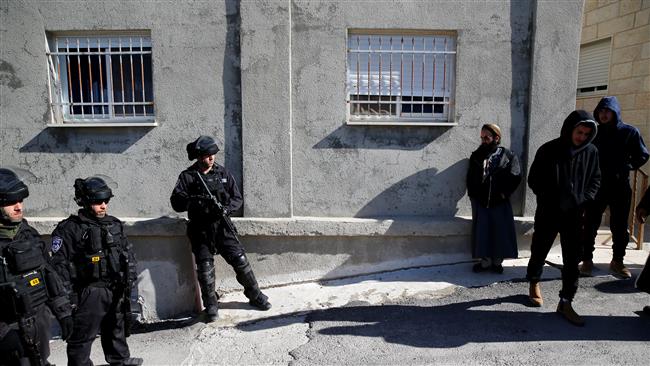Terrorist israel mulls constructing settlement on Palestinian trucker’s house site


Occupation regime is planning to build a new illegal settlement in the occupied East Jerusalem al-Quds and on the site of the home of the Palestinian man involved in a deadly truck attack against Israeli troops.
The regime in Tel Aviv has already ordered the demolition of Fadi al-Qanbar’s home in the Jabel Mukaber neighborhood of southern East Jerusalem al-Quds,
The so-called Municipality of Jerusalem al-Quds now aims to build 2,500 settler units on the remains of the soon-to-be-destroyed house and a large surrounding area, Israel’s Hebrew-language Channel 10 television network reported on Wednesday.
The plan will leave the family of the slain 28-year-old Palestinian man homeless under Israel’s policy of home demolitions, which has been widely denounced as an act of collective punishment and illegal under international law.
An unnamed spokesperson for the Jerusalem al-Quds municipality later claimed that “the plans in question were approved a year ago, and are unrelated to recent events.”
The allegations came as Israeli authorities have called for extremely tough measures against the family of Qanbar, who drove a truck into a group of Israeli troops and killed four of them on January 8. The Palestinian trucker was shot dead.

His mother and 12 other relatives are to have their Jerusalem al-Quds residency permits revoked, and they run the risk of being forcibly uprooted and exiled to the blockaded Gaza Strip or even Syria.
The truck attack came amid ongoing tensions between Israeli forces and Palestinian protesters, in what is regarded as the third Palestinian Intifada against the regime’s occupation.
Gaza-based Hamas and Islamic Jihad resistance movements have termed the incident as a natural response from Palestinians to the ongoing Israeli aggression and its violent treatment towards Palestinian people.
The occupied Palestinian territories have witnessed tensions ever since Israel imposed restrictions on the entry of Palestinian worshipers into the al-Aqsa Mosque compound in East Jerusalem al-Quds in August 2015.
More than 270 Palestinians have lost their lives at the hands of Israeli forces in the tensions since the beginning of October that year. A total of 40 Israelis, two Americans, a Jordanian, an Eritrean and a Sudanese have been killed in the wave of violence as well.







